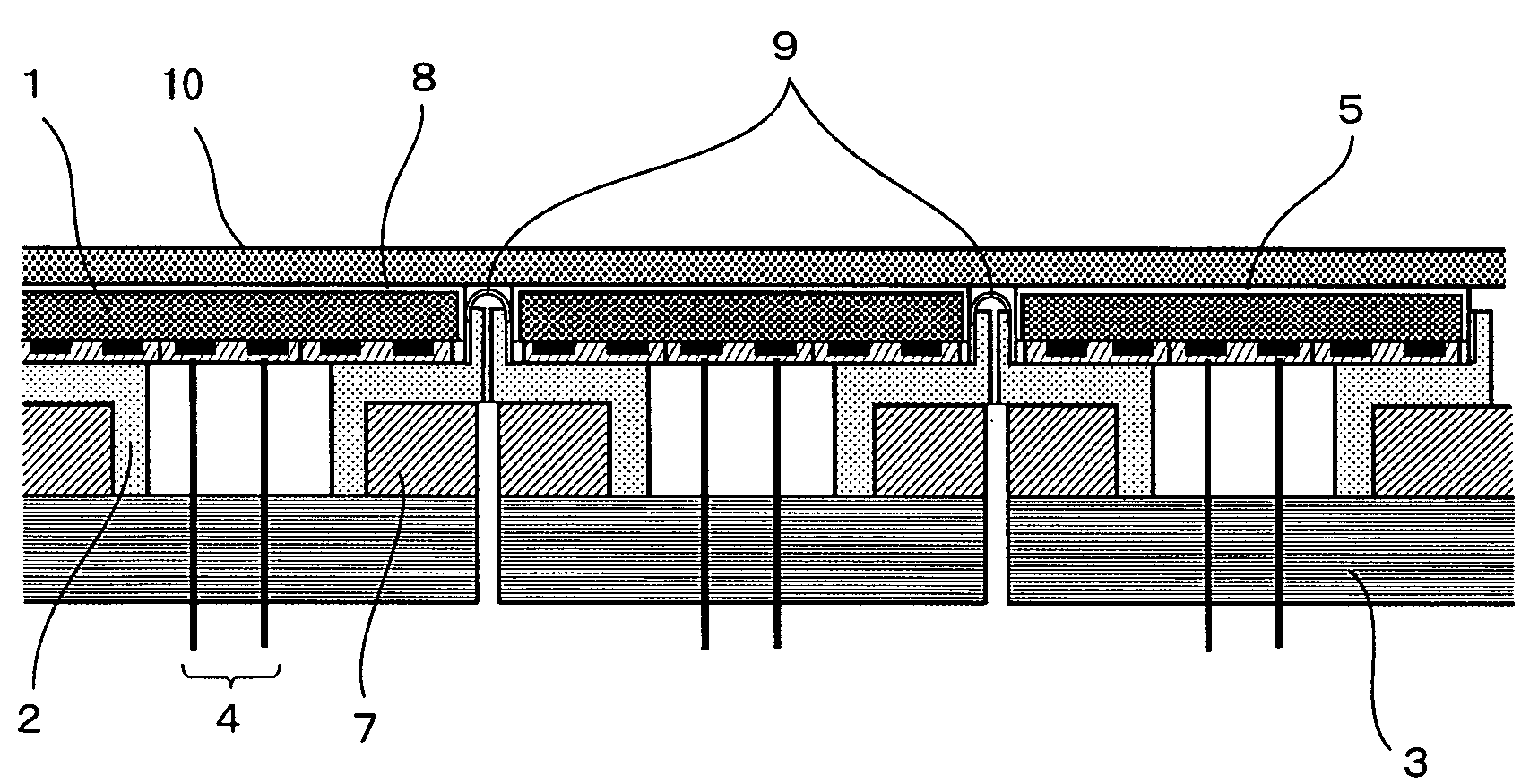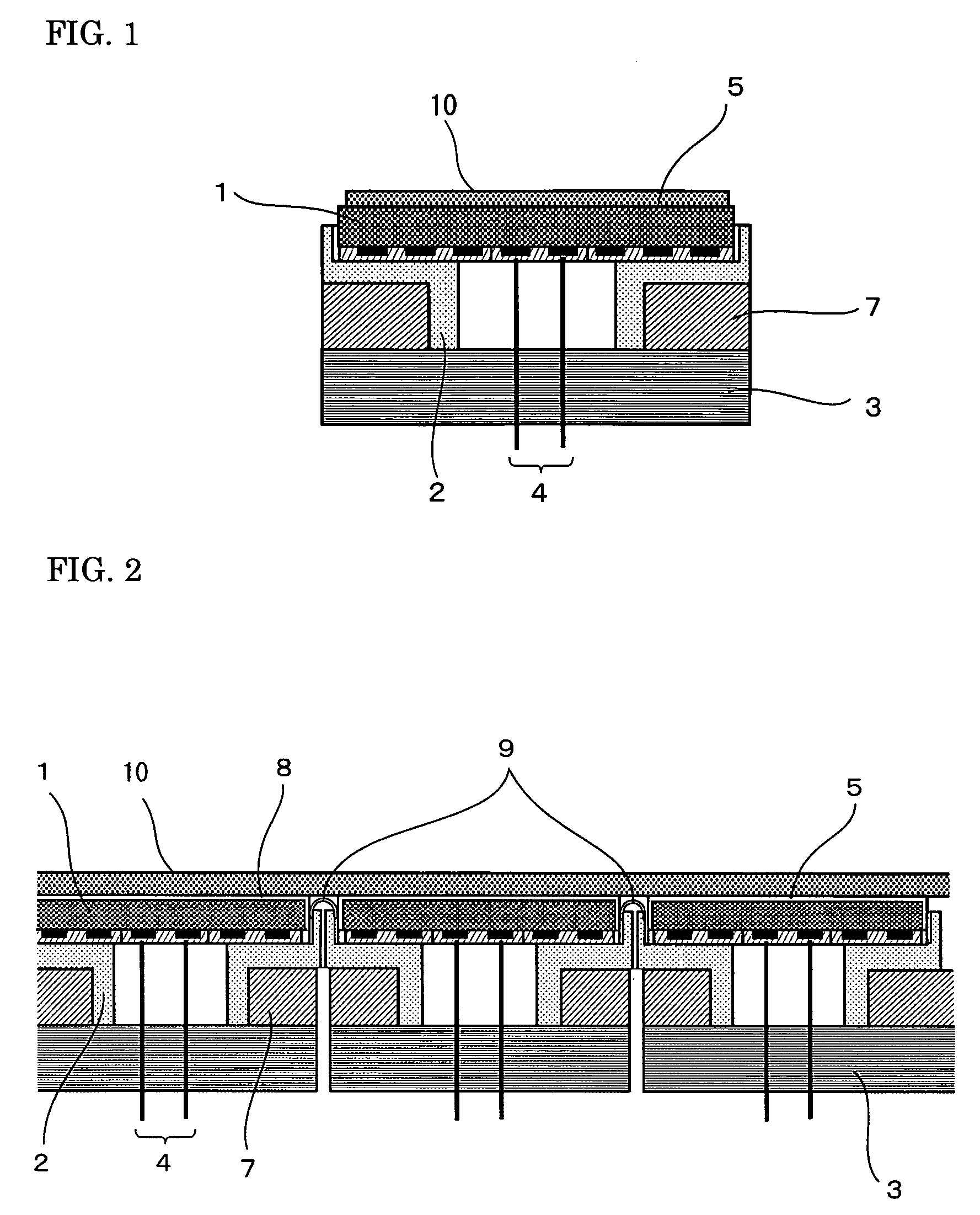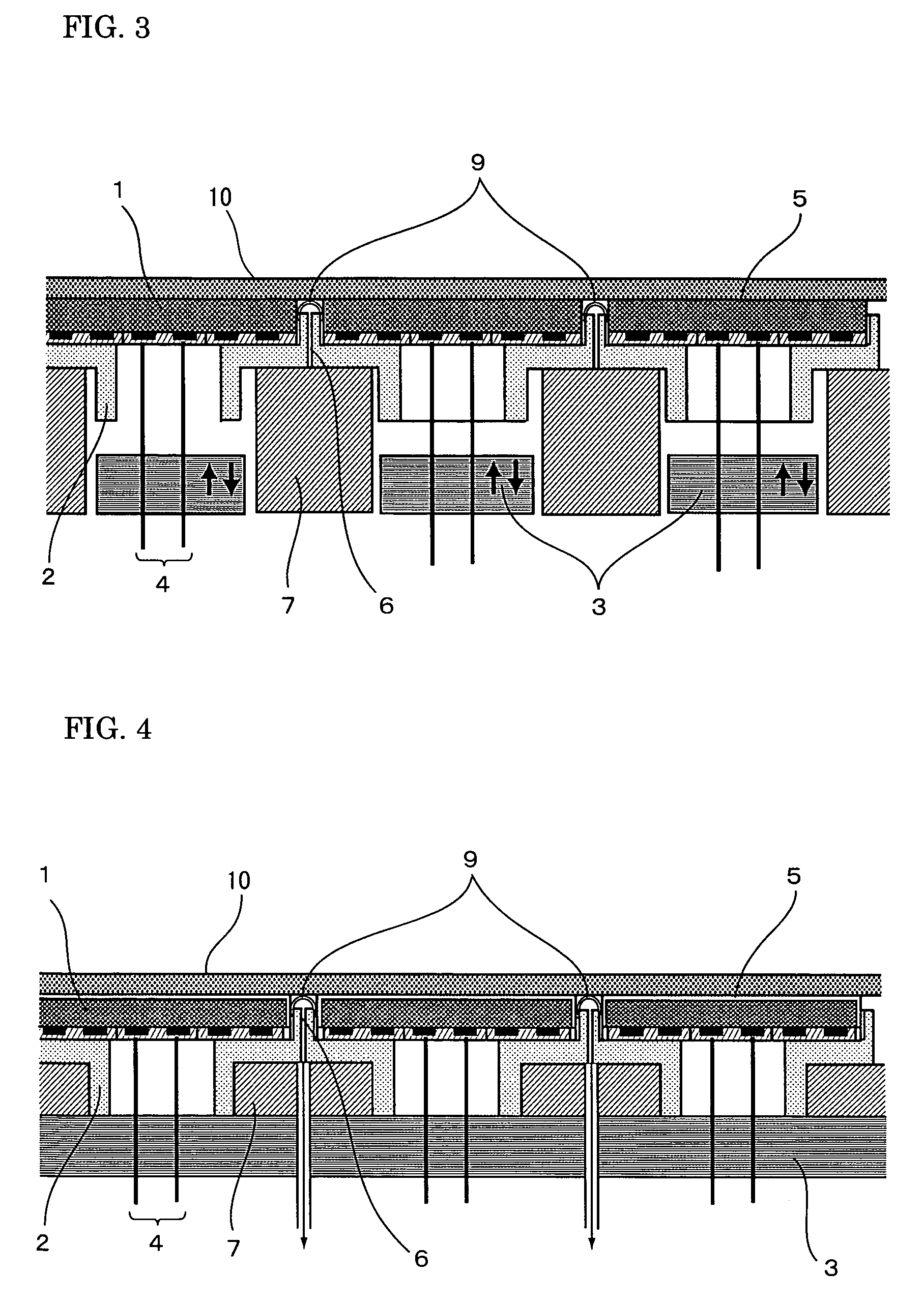Semiconductor heating apparatus
a heating apparatus and semiconductor technology, applied in the direction of heater elements, semiconductor/solid-state device testing/measurement, instruments, etc., can solve the problems of low thermal capacity, difficult to maintain, and difficult to raise and lower the temperature of the heater, so as to achieve low thermal capacity, low cost, and high rigidity.
- Summary
- Abstract
- Description
- Claims
- Application Information
AI Technical Summary
Benefits of technology
Problems solved by technology
Method used
Image
Examples
embodiment 1
[0040]100 parts by weight of aluminum nitride (AlN) powder and 0.5 parts by weight of yttrium oxide (Y2O3) powder were mixed. Polyvinyl butyral as a binder and dibutyl phthalate as a solvent were mixed at 10 parts by weight and 5 parts by weight, respectively. Granules were created by spray drying. After sintering and then polishing, these were press molded to obtain 32 sintered bodies the size of 38 mm×38 mm×2 mm. These were degreased at a temperature of 700 degrees C. in a nitrogen atmosphere, and these were sintered for 5 hours in a nitrogen atmosphere at 1850 degrees C., and 32 AlN sintered bodies were created. These AlN sintered bodies were processed and finished to a size of 38 mm×38 mm×2 mm. The thermal conductivity of the AlN sintered bodies was 175 W / mK.
[0041]On the 38 mm×38 mm surface of the AlN sintered body, the heating element circuit was screen printed using a W paste. The W paste was created by adding glass powder and an ethyl cellulose binder for calcination to W pow...
embodiment 2
[0049]100 parts by weight of SiC powder, 1.0 part by weight of boron carbide (B4C), and 1.0 part by weight of carbon (C) powder were mixed. Polyvinyl butyral as a binder and dibutyl phthalate as a solvent were mixed at 10 parts by weight and 5 parts by weight, respectively. Granules were created by spray drying. After sintering and polishing, these were press molded to obtain 38 mm×38 mm×2 mm sintered bodies. These were degreased at 700 degrees C. in an argon atmosphere. These were sintered for 5 hours at 1920 degrees C. in an argon atmosphere to create 32 SiC sintered bodies. These SiC sintered bodies were processed and completed to be 38 mm×38 mm×2 mm. The thermal conductivity of the SiC sintered bodies was 150 W / mK. As in Embodiment 1, heating circuits were formed on these SiC sintered bodies, and W terminals and Ni electrodes were attached. The SiC heating parts were completed.
[0050]The heating apparatus was completed in the same manner as in Embodiment 1 except for the 32 heati...
embodiment 3
[0051]100 parts by weight of Si3N4 powder, 1.0 part by weight of Y2O3 powder, and 1.0 part by weight of Al2O3 powder were mixed. Polyvinyl butyral as a binder and dibutyl phthalate as a solvent were mixed at 10 parts by weight and 5 parts by weight, respectively. Granules were created by spray drying. After sintering and polishing, these were press molded to obtain 38 mm×38 mm×2 mm sintered bodies. These were degreased at 700 degrees C. in a nitrogen atmosphere. These were sintered for 5 hours at 1650 degrees C. in a nitrogen atmosphere to create 32 Si3N4 sintered bodies. These Si3N4 sintered bodies were processed and completed to be 38 mm×38 mm×2 mm. The thermal conductivity of the Si3N4 sintered bodies was 80 W / mK. As in Embodiment 1, heating circuits were formed on these Si3N4 sintered bodies, and W terminals and Ni electrodes were attached. The Si3N4 heating parts were completed.
[0052]The heating apparatus was completed in the same manner as in Embodiment 1 except for the 32 hea...
PUM
| Property | Measurement | Unit |
|---|---|---|
| force | aaaaa | aaaaa |
| thickness | aaaaa | aaaaa |
| diameter | aaaaa | aaaaa |
Abstract
Description
Claims
Application Information
 Login to View More
Login to View More - R&D
- Intellectual Property
- Life Sciences
- Materials
- Tech Scout
- Unparalleled Data Quality
- Higher Quality Content
- 60% Fewer Hallucinations
Browse by: Latest US Patents, China's latest patents, Technical Efficacy Thesaurus, Application Domain, Technology Topic, Popular Technical Reports.
© 2025 PatSnap. All rights reserved.Legal|Privacy policy|Modern Slavery Act Transparency Statement|Sitemap|About US| Contact US: help@patsnap.com



